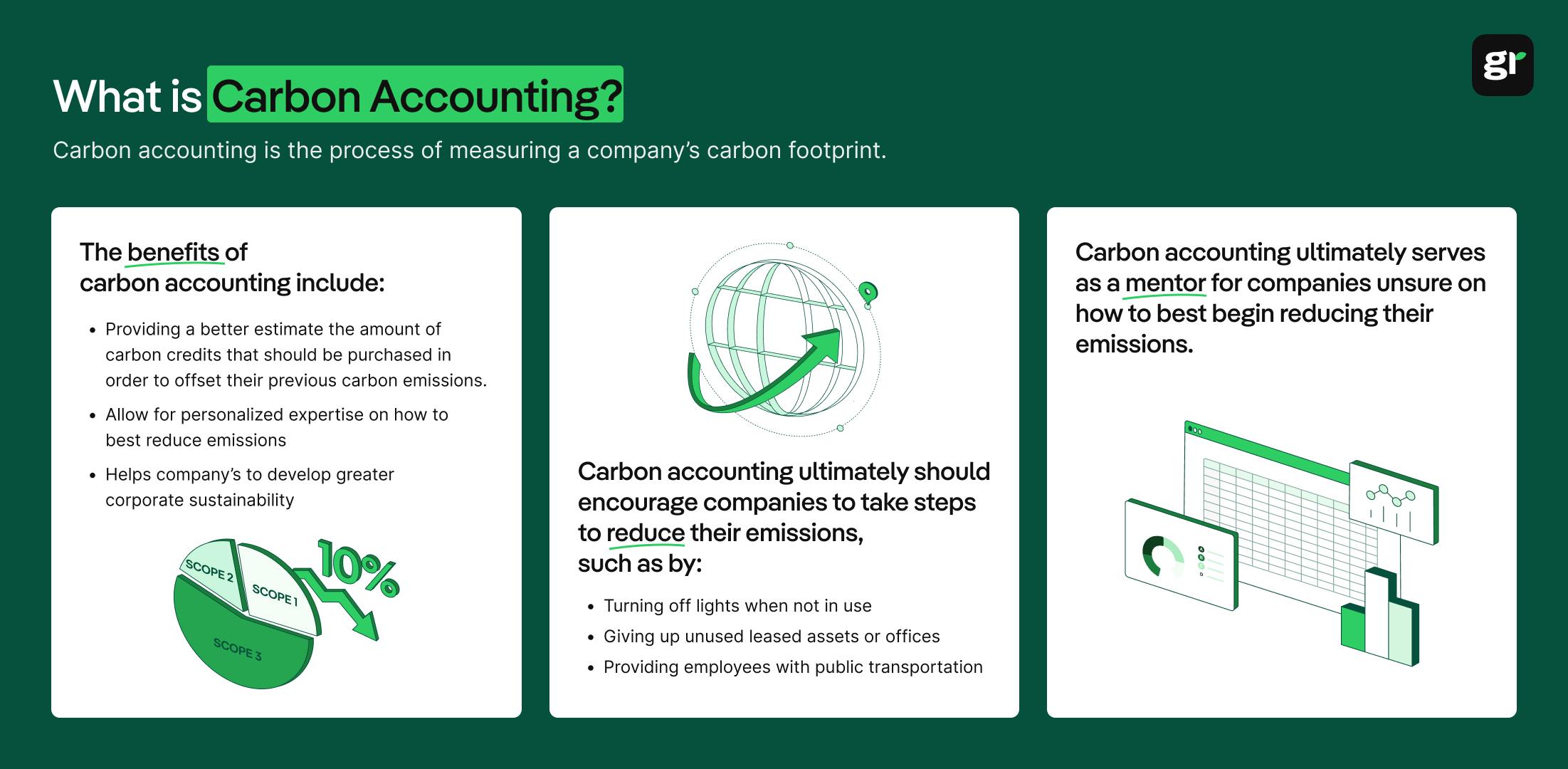
What are the 3 Pillars of Corporate Sustainability?
In this article, we'll explore what the 3 pillars of corporate responsibility are, why they're important, and how businesses can turn them into practical action.
ESG / CSR
Industries



How scope 3 emissions differ from scope 1 and 2 emissions
Why scope 3 emissions are more challenging to measure
How carbon accounting can help with scope 3 emissions
In the midst of the grave global concern that is climate change – more and more companies around the world are opting to take in carbon accounting and determine whether scope 1, scope 2, or scope 3 emissions are the main source of the excessive carbon emissions.
More specifically, scope 3 emissions could be the key component to companies truly understanding how their arbitrary activities are doing serious environmental damage.
But why are scope 3 emissions so important if they aren’t as distinct as scope 1 or scope 2 emissions?
Scope 3 emissions are the final category of measurements in carbon accounting where miscellaneous emissions that don’t fall under scopes one or two.
Activities that could fall under scope three include the use of raw materials, purchased goods or services, transportation such as employee commuting, leased assets, franchises, investments, and business travel.
Because Scope 3 is the most difficult category in carbon accounting to precisely measure because it is general and includes all emissions that don’t fall under scope 1 or scope 2 emissions.

Scope 3 emissions are different from scope 1 and scope 2 emissions as they are extremely difficult to clearly delineate; both casually and mathematically.
As previously mentioned, scope 3 emissions are any activities, products, or services that a company contributes to that produces emissions that don’t fall within either scope 1 or scope 2 emissions.
Carbon accounting is split into three different categories of carbon emissions, otherwise known as, “scopes”. Emissions. Scope emissions 3, 2, and 1 seek to simplify the process of measuring one’s carbon footprint.
The Greenhouse Gas Protocol has clarified that the categories of the scopes – are determined by where the carbon emissions come from. This could be from industrial activity, vehicle use, electrical consumption caused by heating or cooling systems, or other various emissions that do not fall under scopes one and two.


Scope 1 emissions are carbon emissions that come directly from industrialization habits or the vehicles used in your company. So, the carbon impact of your production line or how often you’re filling up your company car for gas that pollutes the planet would all contribute to scope 1 emissions.
Any use of fuel, non-renewable energy sources like fossil fuels, greenhouse gasses, or oils, chemical leaks, and the energy or electricity used for your offices or other various facilities would also fall under scope one emissions as well.
Components that qualify as scope 2 emissions include anything that requires energy consumption, such as electricity needed to run a rented office space or leased vehicles, such as fuel or the electricity required to run central heating or air conditioning.
Essentially, scope 1 and 2 emissions are 100% subject to change by the company itself. In other words, all of the emissions in scope 1 and scope 2 are contingent on the company’s business model and future actions. Scope 3 emissions are also caused by actions or activities of the company, but are actually created by an outside source instead of within the company itself.
Think of it this way: say you are told to go on a business trip from New York City to London. On average, a one-way flight alone across the Atlantic creates nearly six hundred kilograms of carbon dioxide emissions, or 0.59 tonnes of carbon dioxide emitted into the atmosphere.
Of course, the employee that is going on the business trip is the reason why these carbon emissions are being produced, but the employee and company in question itself can’t be responsible or control how many carbon emissions are created from that specific flight.
This is precisely why scope 3 emissions are difficult for a company to reduce.
Carbon accounting is the method that companies use to determine how many carbon dioxide emissions they are responsible for.
For instance, through calculating a company’s carbon emissions, carbon accounting can help a company determine how many carbon credits a company should purchase in order to offset their current rate of carbon emissions. Therefore, carbon accounting helps a company or organization fairly decide how to negotiate exchanges for carbon offsets or carbon credits across various sectors.


Carbon accounting is also referred to as greenhouse gas accounting.
The main goal of carbon accounting is to provide carbon dioxide and greenhouse gas emissions with a set value so that they can be represented as a financial value in the carbon market.
Carbon accounting has grown in popularity due to the movement for companies and nations across the globe to achieve net-zero emissions by 2050. Carbon accounting helps companies join the fight against climate change and reduce their carbon footprint.

Carbon accounting is important because it helps companies identify the largest sources of contributing to their carbon footprint, but that isn’t the only reason why carbon accounting is beneficial.
The flip cards below (move cursor over card to flip) will further reveal why carbon accounting is important:
There are several benefits to carbon accounting. For instance, carbon accounting is a good first step towards developing corporate sustainability. As climate change continues to grow as a cause for concern, investors and customers alike are seeking to partner or purchase products or services from businesses that seek not only financial success, but environmental sustainability as well.
Carbon accounting also helps to avoid greenwashing and stimulate financial growth.
Investors are increasingly interested in companies that are willing to adjust their business model to contribute to the fight against climate change. Therefore, companies that use carbon accounting are likely to improve appeal to new investors, and discover new financial opportunities.
The overview cards below will reveal more benefits of carbon accounting:
Serves as a foundational step for developing strong environmental and social governance practices within your company.
Encourages new business opportunities by aligning your operations with sustainable investment and economic resilience.
Provides transparent and measurable data that distinguishes genuine climate action from misleading sustainability claims.
Appeals to investors seeking credible, environmentally responsible companies committed to fighting climate change.
Builds consumer and stakeholder trust by demonstrating accountability and commitment to sustainable growth.
Contributes to international efforts like the Paris Agreement by monitoring and reducing your carbon footprint.
As explained in the business trip example above, scope 3 emissions are difficult to have complete authority over due to the fact that the carbon emitting activity takes place outside the realm of control of the company.
In other words, if a company wants to reduce their use of plastic – they are able to make that decision. However, the company is indirectly supporting the use of plastic if a flight on a business trip is serving meals in pre-packaged boxes.
This makes scope 3 emissions not only difficult to define, but more difficult to measure and actively reduce.
Measuring scope 3 emissions can be extremely beneficial for companies, as they will find that most of their excessive greenhouse gas emissions aren’t occurring within their scope 1 or scope 2 emissions.
Ultimately, taking the time to accurately measure a company's scope 3 emissions can lead to opportunities to reduce operational costs while also lowering their carbon footprint.
The vertical timeline below will reveal the process of measuring and calculating a company's scope 3 emissions:
List upstream and downstream activities across the 15 Scope 3 categories (e.g., purchased goods, transport, use of sold products, end-of-life).
Choose organizational boundary (equity share or control), reporting year, and any exclusions with justification.
Do a quick screening (often spend-based) to identify high-impact categories and suppliers to focus data collection on.
Pick the best method per category: supplier-specific/activity data where available; otherwise hybrid or spend-based with reliable emission factors.
Gather units (kg, kWh, ton-km, $) from ERPs, invoices, and supplier questionnaires; source emission factors from databases or suppliers.
Emissions = Activity × Emission Factor (apply unit matching). Use allocation rules where needed (e.g., by mass, revenue, or economic share).
Sum results across suppliers and categories, avoid double counting (e.g., internal transport vs. purchased services), and document assumptions & data quality.
Optionally seek assurance, report transparently, set supplier engagement targets, and repeat annually to track reductions and improve data coverage.
Additional benefits of a company measuring their scope 3 emissions include assessing where the strongest carbon dioxide emissions are being produced in their supply chains, the opportunity to reduce those energy-sucking sectors and seek renewable energy resources instead, and to improve overall energy efficiency.
Also, measuring scope 3 emissions can help a company determine which suppliers are the most committed to sustainability efforts, and which are only further contributing to the many environmental problems we face today. Measuring scope 3 emissions and establishing this transparency between suppliers and the company can help to create new sustainability goals, prevent greenwashing, and ultimately aid in the fight against climate change.
It’s probable to think that factors outside of the main realm of fitness, like diet and exercise, wouldn’t have an impact on achieving your overall goal – but it can. The same goes for scope 3 emissions; scope 3 emissions could be preventing you and your company from reaching your carbon reduction goals.
All in all, measuring scope 3 emissions may seem trite and ineffective, but the truth is – discovering the idiosyncratic components of your company that are contributing to excessive carbon emissions and climate change and help to create a more positive, environmentally friendly working atmosphere where your employees will be more motivated to reduce their own carbon footprint as well.

Carbon accounting is a great way to determine where the majority of your carbon emissions are coming from, but what are some baby steps that you and your company can take to start reducing your carbon footprint?
Here are 3 small steps your company can take to reduce their overall carbon emissions and ultimately join the fight against global warming.
These days, with so many electronics, cars, and phones automatically adjusting to particular scenarios, it’s easy to accidentally leave the air conditioning on in your car or to forget to shut off the light in your room before leaving the house. An easy way to reduce your electrical consumption and your carbon footprint is to make sure that inhabited spaces aren’t using superfluous electricity when the space isn’t occupied.
Besides reducing your electrical consumption and helping the environment, monitoring your electrical activity can help your company save some money!
With all of the plentiful, environmentally friendly methods of transportation these days – there’s really no need to go through all the trouble of gassing up your car and further polluting the environment with greenhouse gas emissions.
Opt for the metro, bus, bike or scooter subscriptions, or even a rideshare to reduce your carbon emissions.
This also provides the opportunity for employees to exercise more and save money from the incessantly increasing price of gas!
You know how sometimes you’ll sign up for a subscription service to watch one particular show or purchase a certain product, and then never use that subscription service again – but still have automatically recurring deductions from your bank account unknowingly because you forgot to cancel said subscription?
You’re losing money that you don’t need to be, and the same goes for your company renting spaces or equipment that aren’t being used as much as they should be.
Evaluating which rented vehicles, co-working spaces, or companies that aren’t being used on a daily basis and aren’t worth the environmental upkeep is an excellent way to reduce your carbon emissions and fight against climate change.
If reading this article about scope 3 emissions has made you interested in reducing your carbon emissions to further fight against climate change – Greenly can help you!
Greenly can help you make an environmental change for the better, starting with a carbon footprint assessment to know how much carbon emissions your company produces.
Click here to learn more about Greenly and how we can help you reduce your carbon footprint.